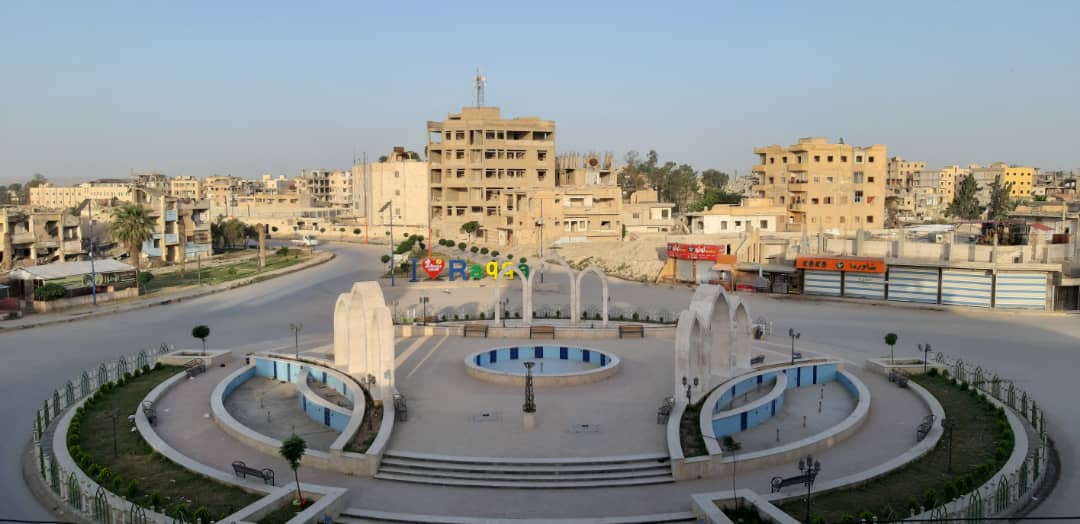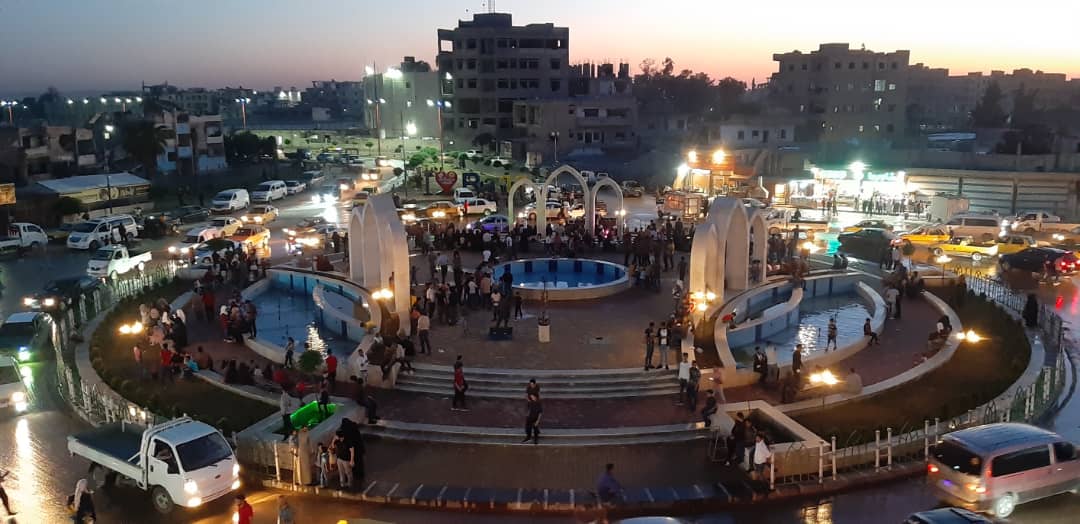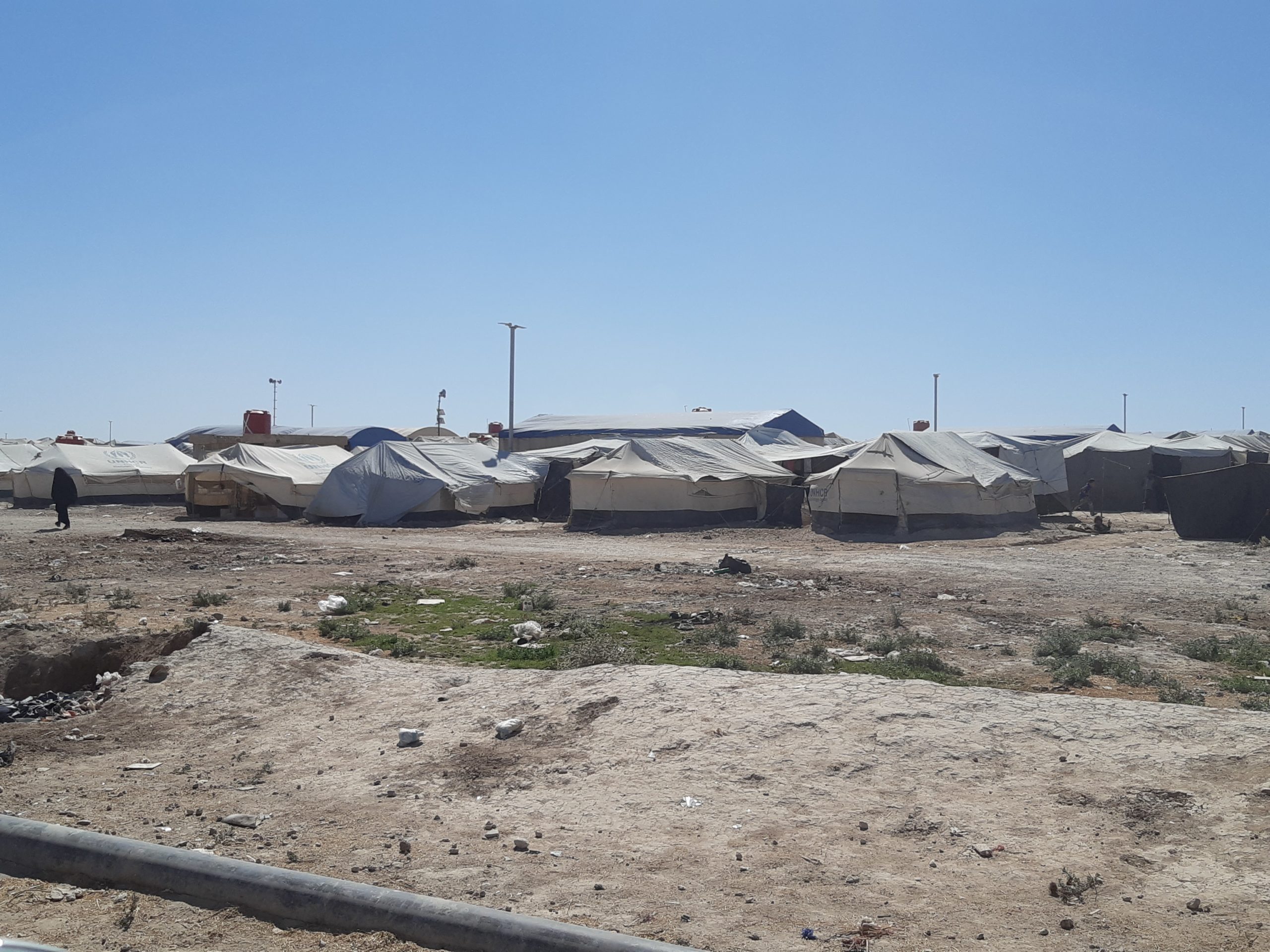After nine years of conflict and with over 6 million estimated internally displaced persons, Syria announced its first COVID-19-related death on 29 March. Fearing the worst, authorities across the country imposed curfews in a bid to stop the spread of the virus. To date, official figures suggest a relative success story, with only 124 cases of Covid-19, and six deaths, out of a population nearing 17.5 million. We spoke to Firas CEO of Investimate, ORB’s sister company in Syria, to understand more about COVID-19 in the Syrian context.
Al Naeem Square, Raqqa, during curfew
Firas, tell us about lockdown.
Since the beginning of April, authorities across Syria’s different regions of control have used curfews to halt the spread of the virus: that is, prohibiting Syrians from leaving their homes for set periods during the day in order to reduce social contact. There have also been restrictions placed on movement between governorates with a view to minimizing the potential rate of transmission.
And how successful have these measures been in curbing the spread of the virus?
No one can say definitively. The official numbers released by the Syrian Health Ministry would suggest a relative success story compared with, for example, Syria’s neighbour Iraq (almost 6500 confirmed cases and over 200 COVID-related deaths). However, without rigorous and widespread testing, it is hard to know the true scale of the outbreak.
The only testing that is being done is in areas controlled by the Regime. COVID-19 tests in Opposition or SDF-administered regions are practically non-existent.
There is a lot of suspicion and misinformation circulating about the virus. For example, in some rural SDF-controlled areas, people believe COVID-19 is a myth as they have not encountered anyone with symptoms. There are also rumours circulating of COVID-19 outbreaks in Damascus neighbourhoods with high numbers of Iranian militiamen or pilgrims, like for example around Sayyida Zeinab. Trust in media sources is not particularly high here so people are not certain what the truth is.
| Country | Population Size | Total cases | Total deaths | Total tests | Tests/1m population |
| Syria | 17.5m | 124 | 6 | N/A | N/A |
| Iraq | 40m | 9,846 | 285 | 281,901 | 7,021 |
| Turkey | 84m | 167,410 | 4,630 | 2.2m | 26,220 |
Source: Worldometer
What about the restriction measures? How have people adapted to them?
Compared to the poverty, war and bombardments they’ve suffered over the last nine years, COVID-19 is the least of people’s worries.
In areas controlled by the National Syrian Army (formerly the Free Syrian Army – FSA), such as Idlib and rural Aleppo, people were unwilling to adhere to the curfew from the start. Many felt that they had already lived through worse and that, especially given the low number of reported cases, not going out to work every day was more of a risk to them than potentially catching the virus.
In areas controlled by the Regime or by SDF, including Damascus and Deir Ezzor respectively, at first, the threat of penalties or even imprisonment if caught flouting the curfews was enough to ensure broad compliance with the rules. However, as people’s need to work started to outweigh the risks they felt the virus posed to their health, many started to break the curfew in order to go out to work to feed their families.
What are public perceptions of the way the authorities are handling the crisis?
Authorities have dealt with the crisis differently in each area, and opinions of security and governance providers differ greatly from area to area. One of the main criticisms of authorities’ responses across Syria, however, has been a lack of material support to stop the spread of the virus alongside the imposition of curfews.
Authorities have not provided health and sanitation products, and there have been no economic relief packages to ensure households and businesses stay afloat.
Al Naeem Square, Raqqa, outside curfew
What about Syria’s IDPs’ and their experience of the COVID-19 crisis?
Syria has an estimated 6.2 million internally displaced people, with hundreds of thousands living in formal camps, and millions more in tightly packed urban areas and informal dwellings. The threat of COVID-19 is much greater for these displaced Syrians for a number of reasons including population density, lack of adequate healthcare services, the susceptibility of those fleeing disasters to the underlying health conditions that can critically exacerbate the effects of COVID-19, and lack of access to informative literature and personal protective equipment to protect themselves and those around them from the virus.
In September last year, ORB International conducted a survey of 221 residents of Al-Hawl camp in Syria (estimated to be home to 74,000 people, of whom 1 in 10 share tented accommodation with more than 10 others). Even before the Coronavirus pandemic, lack of medical services was highlighted by camp residents as their biggest concern. In 48 qualitative interviews with recent camp leavers, respondents described the lack of access of medical supplies and assistance thus:
When it comes to disease, one either recovers on their own or finds their own medications… they do not let you leave the camp and you receive treatment inside the camp where services are bad… If you bribe them, they will bring medication at an immensely high price. Otherwise, they offer nothing.
Densely populated Al Hawl Camp, Hasekah Governorate
How are ORB International and Investimate conducting research under such challenging conditions?
We continue to offer face-to-face interviews, focus group discussions, and telephone interviews, ensuring that we follow all local and international health guidelines and work within any curfews imposed.
While our telephone interviewing and FGD capacity has not been affected by the restrictions (we currently have capacity to deliver 5000 CATI interviews in 14 days and 30 focus group discussions per month), we have had to adjust our approach to face-to-face quantitative surveying in line with guidelines around movement between governorates and maintaining appropriate social distance.
Despite this, we are still able to carry out 3000 face-to-face interviews per month, nationwide, offering the most representative and rigorous sampling approaches possible.
We have also been developing an exciting new proprietary mobile application which will allow us to reach respondents across the country despite curbs on freedom of movement. Alongside this we are developing a representative panel of respondents across all governorates, collecting telephone numbers from previous face to face surveys and using snowball recruitment for additional respondents. We retain basic demographic information for these contacts (name, age, gender, education, religion, language preference, and ethnicity), continually refreshing to improve representativeness and account for panel attrition.
ORB has been working with Investimate in Syria since 2012, carrying out large-scale continuous and ad hoc research projects, both quantitative and qualitative. We have worked closely together provide our international clients with the very highest quality data, quality assured via our proprietary ARC software for guaranteeing data integrity.
For information on ORB’s current work, or discuss a potential project, get in touch using the Contact page. To read more from our ‘In Conversation’ series, head to the Field Notes section. To read up about ORB UK’s latest UK Covid-19 tracker results, head to our Recent Findings page.



